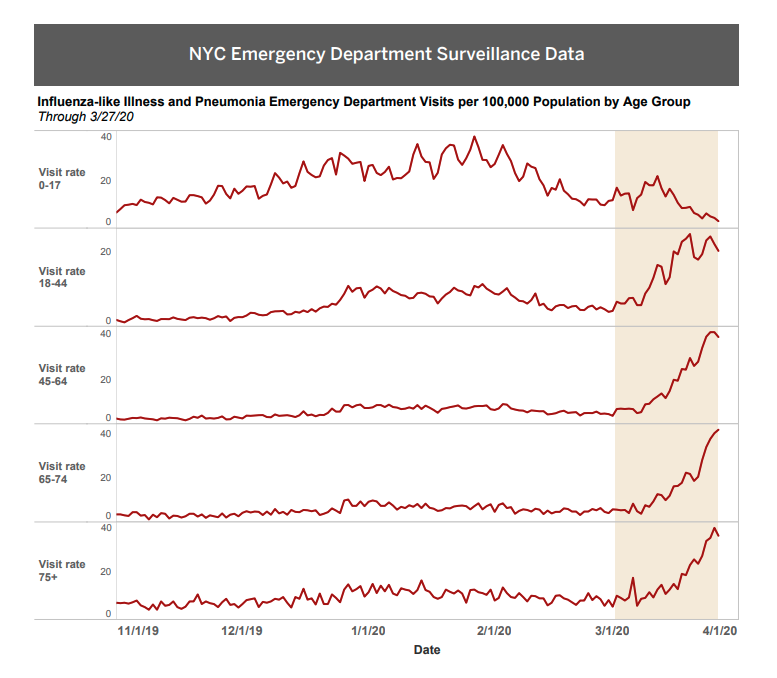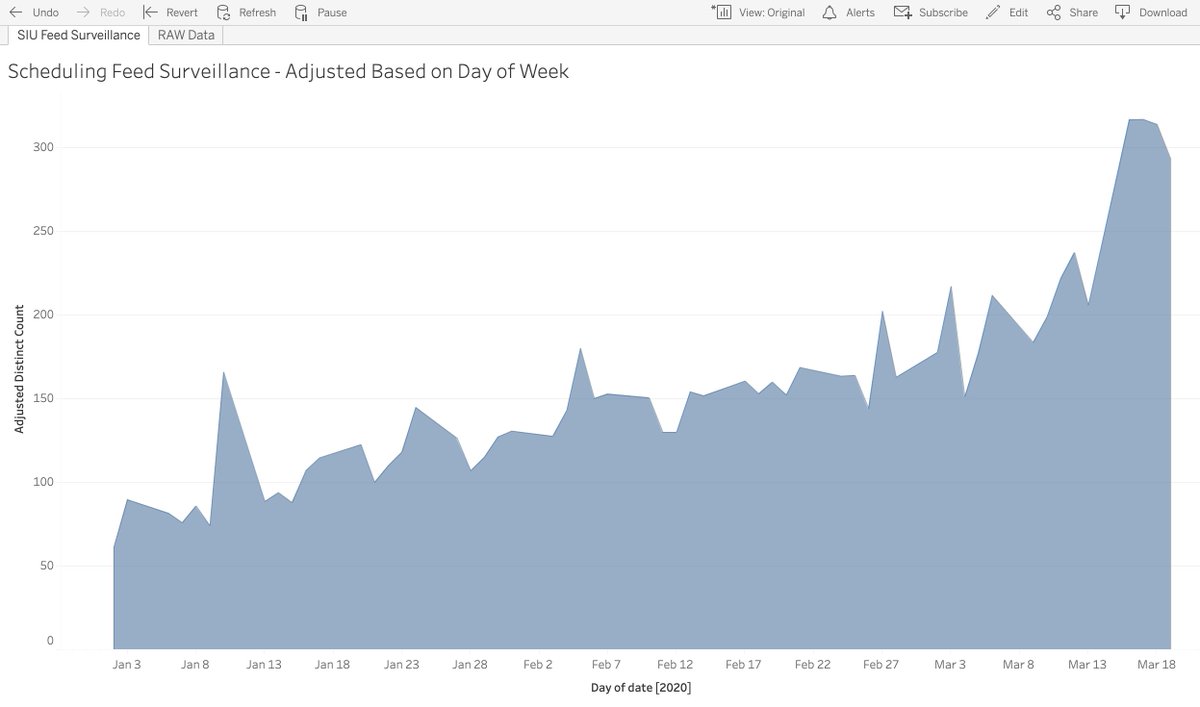a) Case growth
b) Positivity rate
c) ED visits
As you can see, it looks like the slope of the exponential line has slackened just a bit. That's actually a huge deal, if doubling time goes from 2 days to 5 days.
But to build a proper epi curve you need to plot cases by date of onset. cdc.gov/training/quick…
The curve could look much different if you could reconstruct it properly by onset date- without the lag in testing and reporting
WE DON'T HAVE DATE OF SYMPTOM ONSET FOR REPORTED CASES
#FixIt
Don't ask for how many new cases reported today, ask for the curve of cases *plotted by date of diagnosis* this is available.
Then we can see if there is a flattening of the daily growth rate.
We need to set up a systematic data collection system that goes along with lab testing in some controllable site
Dedicated testing sites, sentinel ILI surveillance, selected volunteer EDs collect 6 key Qs on every patient tested
1) Any comorbidities
2) Any Symptoms (cough, fever, shortness breath, taste)
3) Date of onset
4) Any exposure to known case
5) Any recent travel
6) High risk occupation?
someone will build the app, I'm sure. @aneeshchopra will make it FHIR-enabled
We need smart coronavirus testing, not just more testing
statnews.com/2020/03/24/we-…
If the test was only offered to hospitalized patients with pneumonia, then will have very high positive rate. If to asymptomatic people, then expect lower positive rate
We need a consistent channel of testing that we can follow over time.
Again, I would suggest that sentinel Emergency Departments would be ideally suited to be able to serve this role, collect necessary info on severity
...and we all owe a huge debt of gratitude to @nycHealthy for maintaining transparency amidst uncertainty. this graph is theirs
I would love to see that more broadly, including w federal surveillance data

We need to improve the signal to noise by fine-tuning it to COVID symptoms, removing noise due to worried well and/or other viruses, using age distribution to sharpening focus
And we need to be able to investigate
a) It's just one day
b) lots of people have left NYC
c) health-seeking behavior could be shifting
But to me, ED visits not going up inexorably is a huge relief-If infections were up 30% 5 days ago, would expect to see it in ED visits
I would expect new hospitalizations to drop soon.
New ICU admissions would begin to go down next week, though cumulative burden would build
In my toy model of infection dynamics, fully half of hospitalizations and 2/3 of ICU stays are yet to come- under best case
It also elides the truth that the outbreak may continue to burn in pockets/ ethnic communities that aren't or can't protect themselves
If stay-home order had been placed 3 days sooner, it might have been half that?
But if a region is seeing a spike in resp/ILI ED visits, there should be NO DELAY in instituting stay-home measures
How many regions is that now?









